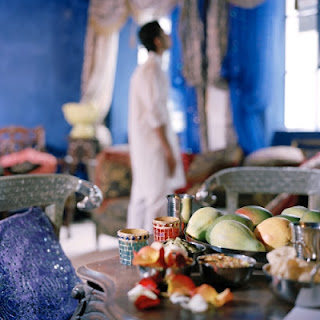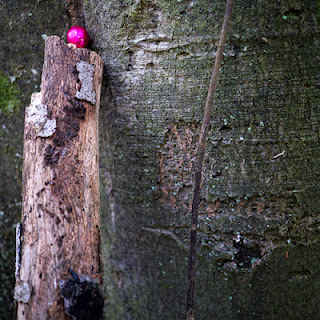It seems like only yesterday, but in fact was about two decades ago, I was having a discussion with a work colleague, each showing the other some photos we had recently taken. I guess that I was talking about photography as an expressive art, when he said “Well, photography, it’s all really a numbers game, isn’t it? You know, give a million monkeys a million typewriters and they will come up with the works of Shakespeare. The same with photography, if you take enough pictures you will come up with a few good ones”.
That was in the days when monkeys used typewriters, before the advent of computers and Monkeysoft Word. Today it’s easier than ever to type documents and plays, but I haven’t noticed any new Shakespearian plays.
It was, and still is, a pretty dumb argument. But the ‘numbers game’ opinion is a common one, and one that still rankles with the serious photographer. What about those great photographs by Andre Kertesz? He said “I only ever take one or two pictures; I know when I have the picture”. Or those classic once-in-a-lifetime, decisive moment pictures by Cartier-Bresson and all the other great street photographers. Or any great picture by any great photographer – they all show an attentive, discerning, deliberate eye, married to good technique.
But over the years, it has become clear to me that photography is indeed, a ‘Numbers Game’. Not in the ‘fire-away-at-random-and-something-good-will-happen’ way (it doesn’t happen), but in the ‘practice-makes-perfect’ way. Just like any other activity involving hand, eye and brain coordination, taking pictures requires lots of practice. It’s like playing tennis. Once you are on court, you don’t know how the game will develop. But if you’ve put the practice in, you can react by getting into the right position, getting your timing right, developing the rally and hopefully winning the point. Just occasionally you will hit a return that is so perfect you will surprise even yourself. The same is true of any sport, playing an instrument, or any art or craft. You just won’t get there without putting in the practice. Kertesz may have only been taking one or two pictures of any subject, but he was still taking an awful lot of pictures compared to the common man. It’s just that he was hitting an ace every other shot! Others have used a sporting analogy; Lee Friedlander has said that taking a picture is “a bit like being thrown a basketball, you have to decide what you are going to do with it”.
The more you practice (and try to get it right) the better you get. After playing a hole in one, the great golfer Arnold Palmer was asked “How do you get to be so lucky?” “It seems the more I practice, the luckier I get” was his reply.
Cartier-Bresson would shoot off a couple of rolls of film before breakfast just to keep his eye in. Likewise, Bill Jay tells of how Josef Koudelka would shoot at least three rolls of film on the days when he wasn’t taking pictures. And is there a photographer more prolific than Gary Winogrand? He would regularly go down to Times Square in New York and shoot off several rolls of film every afternoon. When he died in 1984, it is estimated that he left behind 300000 unedited images and 2500 rolls of undeveloped film! Were these images all classics? Certainly not, but they would all be better than the very best a monkey could have achieved.
These masters, of course, spent all their time taking pictures, and the cost of film, developing and printing was not something to concern them. For us mortals with mortgages to pay and jobs to hold down we could never afford to work that way. Twenty years on from that original conversation, times have changed and photography is now literally a numbers game, with digital being the predominant technology for our art. After the initial outlay, we can take as many pictures as we like without incurring cost, allowing us to practice and experiment in way that was never available in the past. The benefit of quickly reviewing our work on the LCD screen seems so obvious that it makes one wonder how we ever managed before.
I’m still coming to terms with working using a DSLR. For the first time, I have a camera that I can use to make pictures as quickly and as often as I wish, without worrying about the cost and the volume of negatives, transparencies and prints that would result. This is making me examine the ideas I have, try for new ones, experiment with more challenging viewpoints and compositions, and explore different exposures.
With digital, it seems that the hit rate, compared to film, goes down. This, of course, is the price of experimentation; experiment more and you will waste a lot more frames, but ultimately you will discover something fresh and interesting. But what would you call a good hit rate? It depends on how critical you are of your own work. Ansel Adams thought it a particularly good year if he managed to get four really good pictures in that year. Adams was a keen judge of his work and from the plethora of mediocre images on photo websites it would appear that few have this skill today. For the past twenty years or so I’ve exhibited my work, generally in small low-key venues. Even for a small grouping of, say, eight pictures it is incredibly difficult to get a fresh set of pictures that can work together and stand up individually.
There are times when I seem to go through periods of photographers block – like writers block, but with (no) pictures. I can’t seem to see the image in front of me and I loose the imagination to dream what I might achieve. This always occurs during a period of low activity, and I lose my sharpness. The only way out of this malaise for me is to shoot my way out.
The past few months have been like this for me, but I’ve plugged away, trying to get the basics right on the mundane records I’ve been taking. Last night, as I drove home from work, I pulled up on a country lane struck by the lowering clouds and a field of corn. I tried a few ideas out, the pictures started to get better. Working on a few different subjects, it all felt good. Later that evening, I printed out some of the best images. These were the first images I had been excited about for ages. Good enough for the portfolio? I’m not sure yet, but they were pretty good - at least, they were pretty good for a monkey.
This article first appeared on the Arena website in July 2007



































